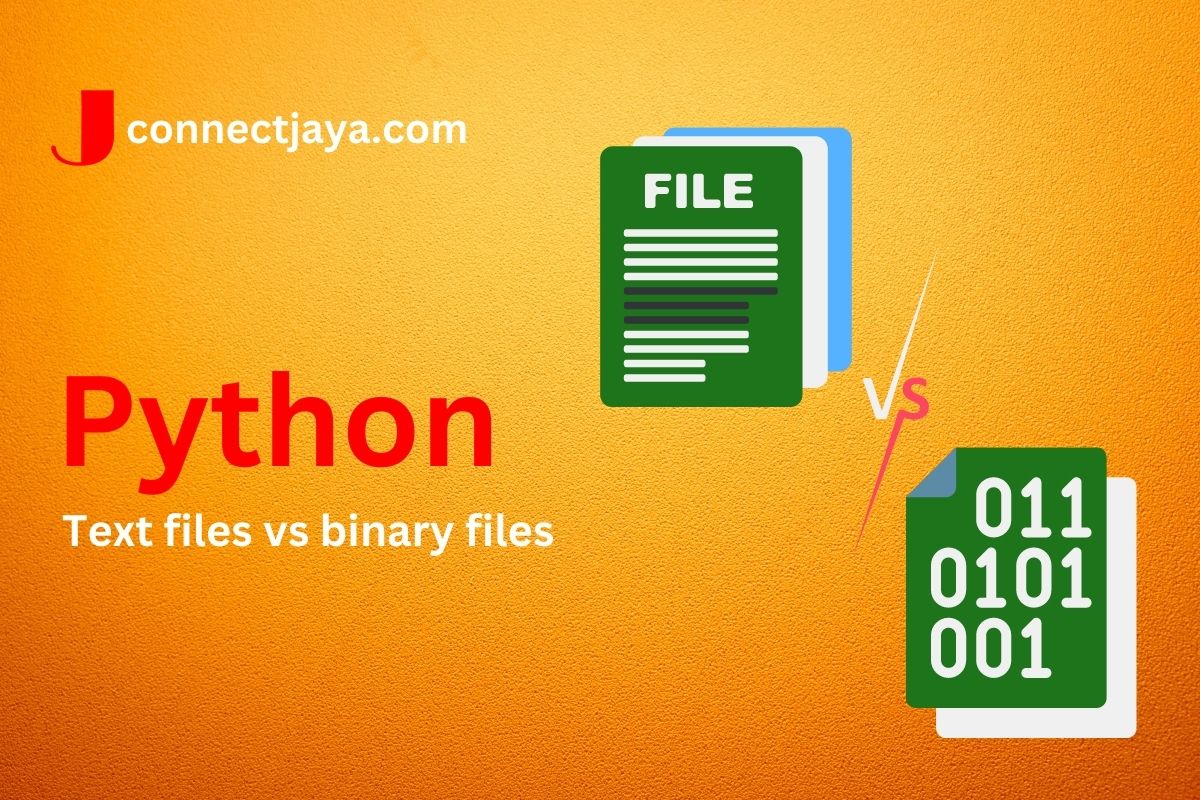In Python, files can be opened in two modes: text mode and binary mode. Text mode is the default mode, and it is used for reading and writing text files, while the binary mode is used for reading and writing binary files.
Text files are files that contain text data, such as strings or characters. They are commonly used for storing configuration files, log files, and data files that contain textual information. In text mode, Python automatically handles the encoding and decoding of the data, depending on the platform’s default encoding scheme.
Binary files, on the other hand, are files that contain non-text data, such as images, audio files, and executable files. They are represented in a computer system as a series of bytes, which do not have any specific meaning until they are interpreted by the application that uses them. In binary mode, Python reads and writes data as a series of bytes without any encoding or decoding.
It is important to note that opening a file in text mode on a platform that uses a different default encoding scheme than the one used to create the file may result in data corruption or loss. Therefore, it is recommended to always specify the encoding scheme when opening a text file.
Example
# Open the file in read mode
file = open("example.txt", "r")
# Read the contents of the file
contents = file.read()
# Print the contents
print(contents)
# Close the file
file.close()
And here’s an example of writing a text file in Python:
# Open the file in write mode
file = open("example.txt", "w")
# Write to the file
file.write("This is some example text.")
# Close the file
file.close()
For binary files, you can use "rb" and "wb" as the modes for reading and writing, respectively:
# Open the binary file in read mode
file = open("example.bin", "rb")
# Read the contents of the file
contents = file.read()
# Close the file
file.close()
# Open the binary file in write mode
file = open("example.bin", "wb")
# Write to the file
file.write(b"\x00\x01\x02\x03")
# Close the file
file.close()
In this example, we read the contents of a binary file into a variable and then wrote some binary data to the same file. Note that binary data is represented as an bytes object in Python, which is why we use the b prefix when writing to the file.
Use cases
File handling is used in many real-world applications such as reading from and writing to configuration files, log files, and database files. For instance, a web application might need to read user authentication data from a configuration file or store user data in a database file. A scientific application might need to read data from a data file and perform data analysis on that data. A game might need to save the current state of the game in a file so that the player can resume the game later. These are just a few examples of the many use cases for file handling in Python.
Another common use case for file handling in Python is data processing. For instance, you may need to process a large amount of data stored in a text file or a binary file. Python provides various modules for reading and writing different types of files, including CSV, JSON, XML, and more. These modules can be used to read data from a file, process the data, and write the processed data to another file.
In addition, file handling can be used for logging and debugging purposes. Python’s logging module provides a powerful way to log information about the execution of a program to a file. This information can be used for debugging or analysis purposes.
Overall, file handling is an important aspect of programming in Python and is used in a wide range of applications.
Another use case for file handling in Python is to create and manage configuration files. Configuration files are used to store settings and parameters for an application and can be easily read and modified using Python’s file-handling modules.
Python also allows you to create temporary files and directories for your programs. These temporary files can be used to store data that is needed only temporarily and can be discarded once the program is finished.
Another use case is for web scraping and data mining. Many websites provide data in the form of HTML or other formats, and Python’s file-handling modules can be used to retrieve and process this data.
In addition, file handling is often used in conjunction with database management systems. Python provides modules for working with different databases such as MySQL, PostgreSQL, and SQLite. These modules can be used to read and write data from and to the databases, as well as perform other operations such as creating tables, adding and deleting data, and more.
Overall, file handling is a versatile and important aspect of programming in Python and is used in many different types of applications.

